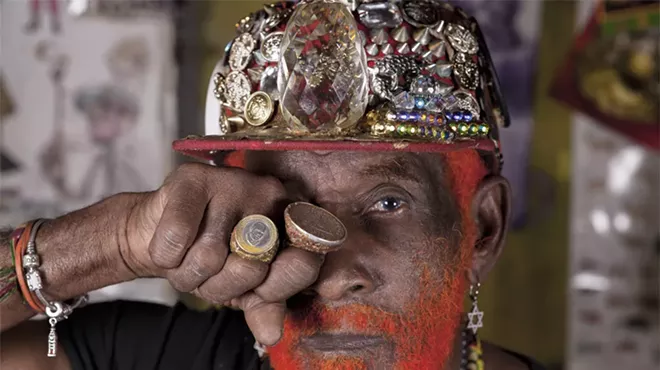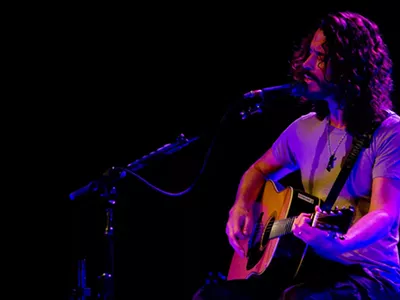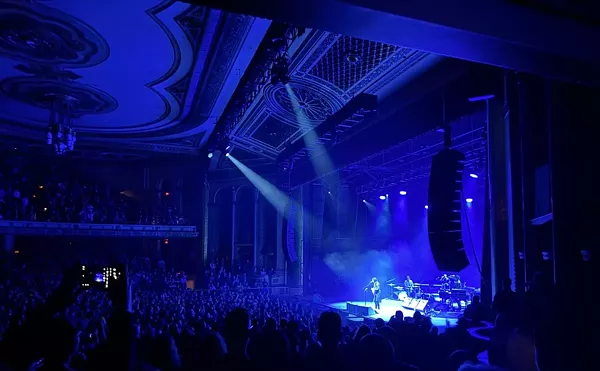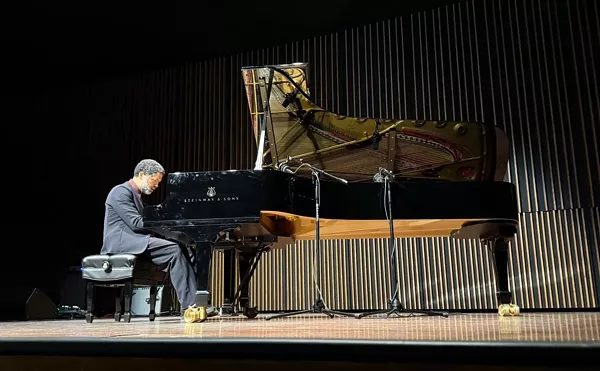
Audio By Carbonatix
[
{
"name": "GPT - Leaderboard - Inline - Content",
"component": "35519556",
"insertPoint": "5th",
"startingPoint": "3",
"requiredCountToDisplay": "3",
"maxInsertions": 100,
"adList": [
{
"adPreset": "LeaderboardInline"
}
]
}
]
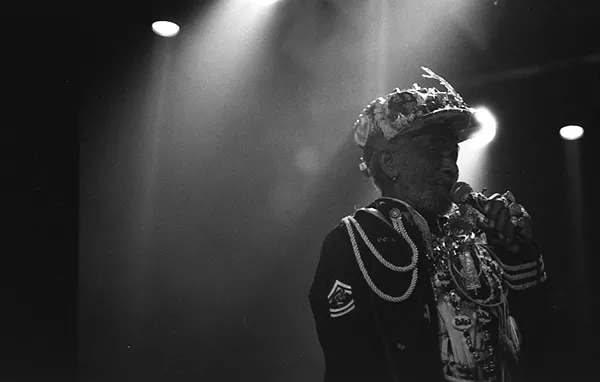
Photo by Tomas Laverty.
When the Subatomic Sound System begins to thump out the room, a few songs later, a gurgly, almost cartoonish voice emanates from the speakers. It’s clear that the voice is live, but it’s coming from somewhere not on stage. It’s a recognizable voice, with a touch more age and rust on it. It’s Lee Scratch Perry, toasting, somewhere backstage with a microphone.

Photo by Tomas Laverty.
He emerges two songs in wearing his hand-crafted suit of mis-matched elements, a hat bedazzled with sequins, buttons, other metal objects, a feather. On his shoes, two small mirrors. He holds the mic next to his mouth, and sticking out from his hand, several sticks on incense wafting into his face.

Photo by Tomas Laverty.
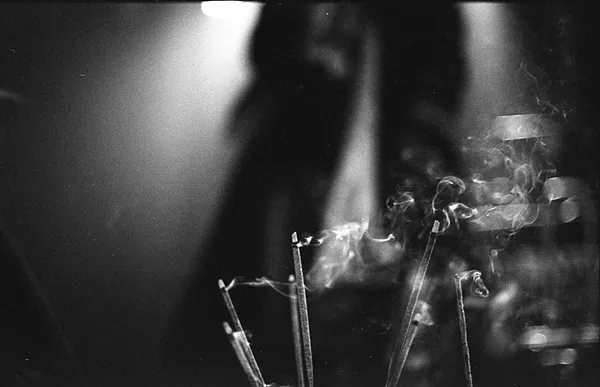
Photo by Tomas Laverty.
El Club can handle the dub, but some members of the audience can’t. There’s no way to really measure the effect serious bass has on the body besides watching the weak-hearted make their way to the back of the room. This happens.
Reggae is not just music; reggae is a way of life. It is a patient and pertinent form of meditation that only the devotee can understand. It’s the kind of thing that, well, if it bores you, then you’re probably boring. Reggae and dub reminds us that not everything should be clear as the light of day. Reggae isn’t so much about the notes themselves, but the spaces between those notes. That’s where the good stuff lives. Lee Scratch Perry found this out a long time ago, and hopefully for a while longer he will keep reminding us.
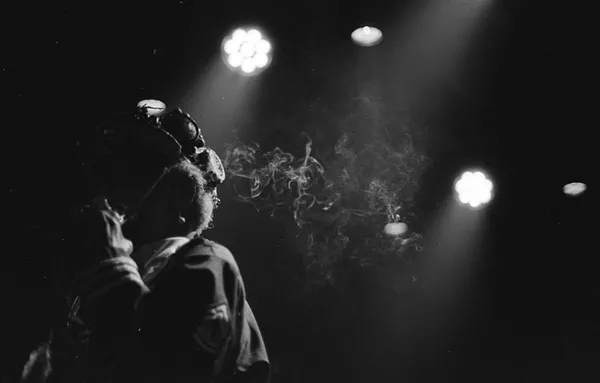
Photo by Tomas Laverty.

